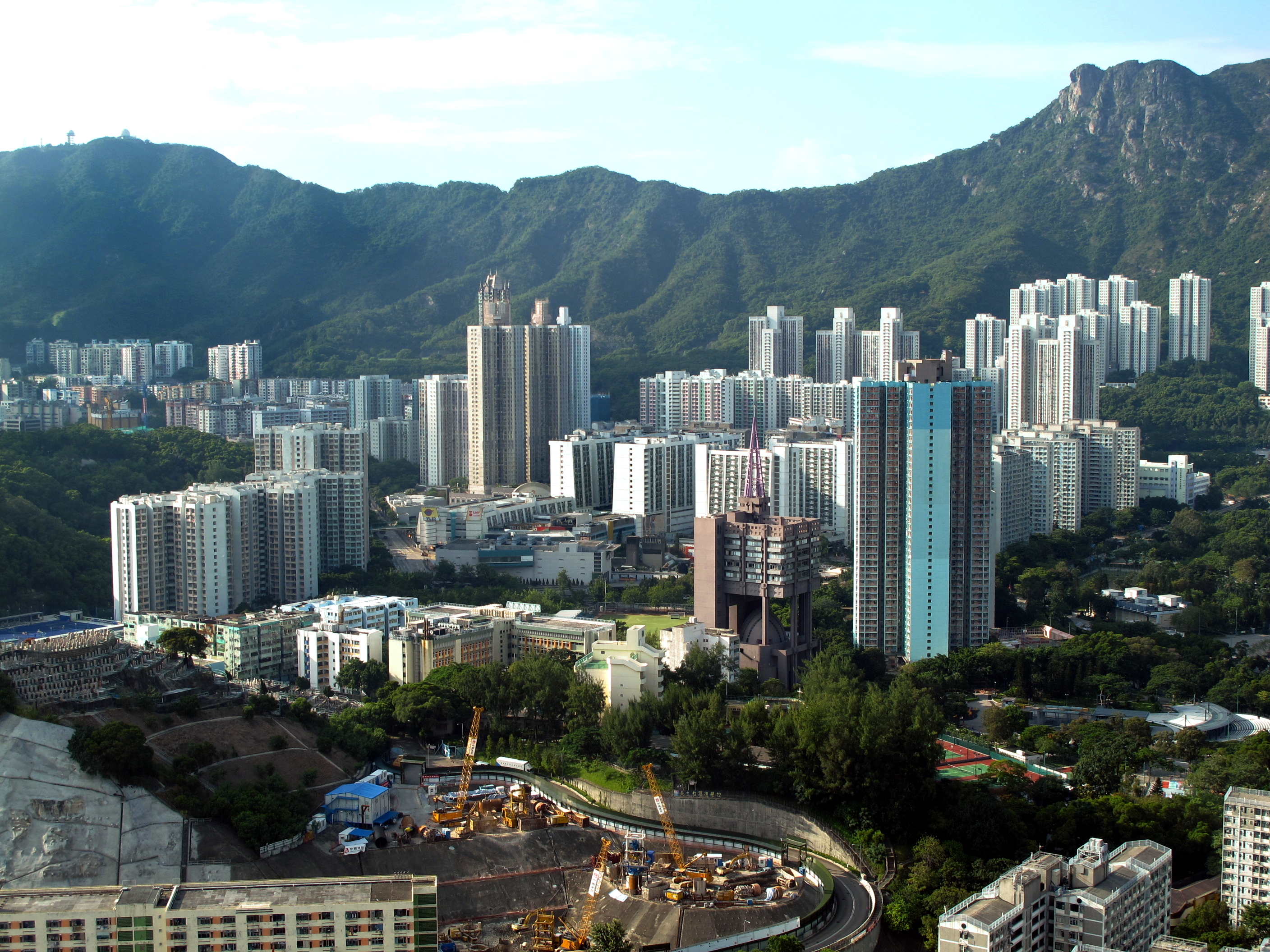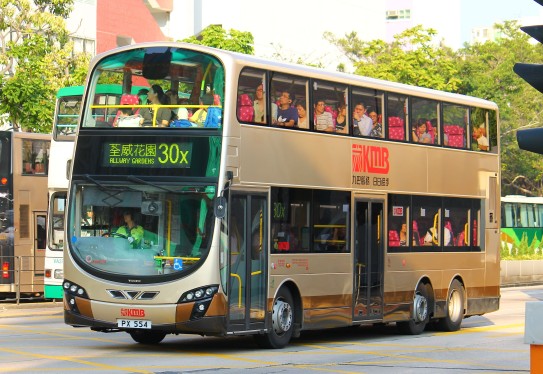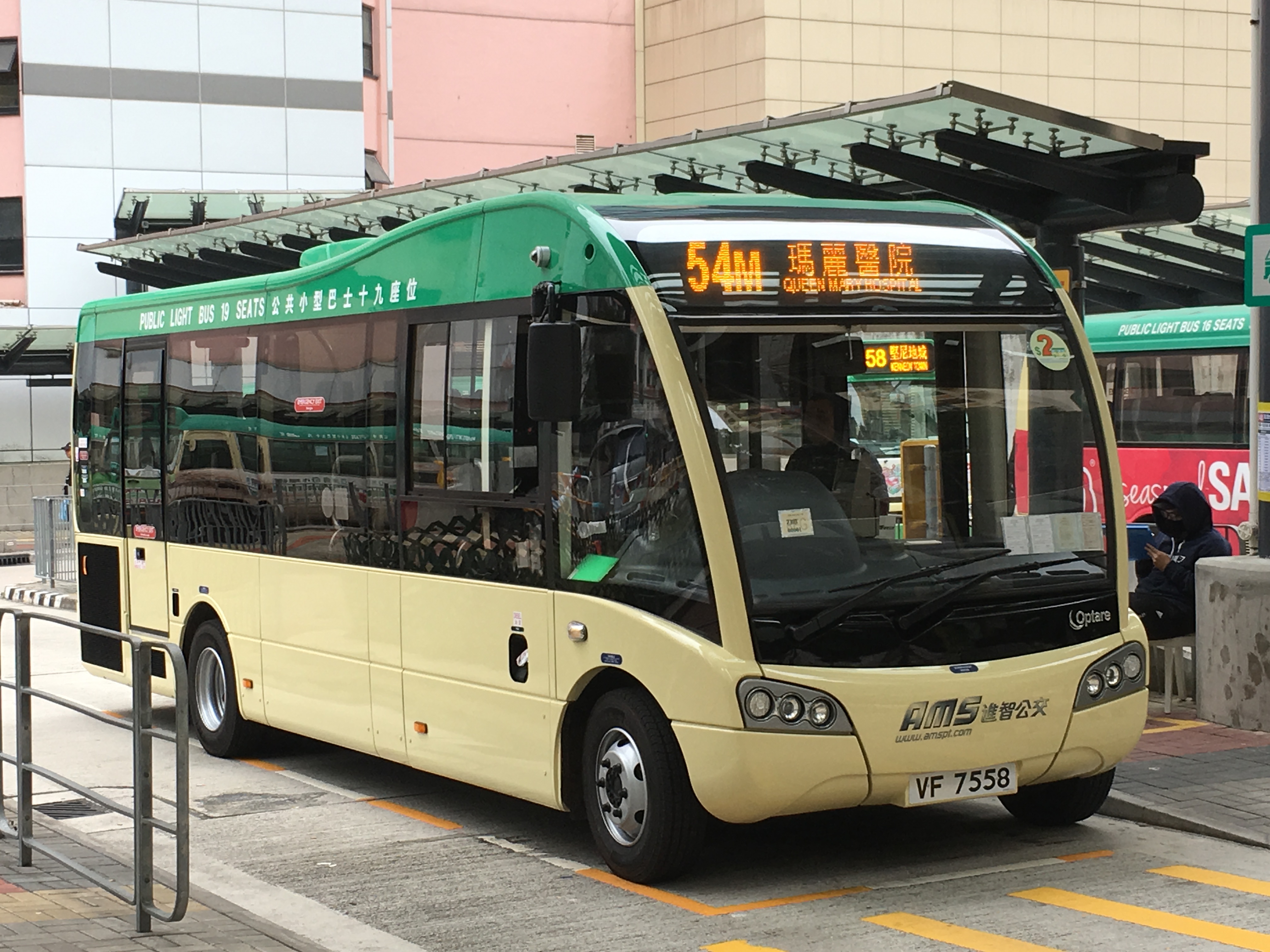|
Lok Fu Station
Lok Fu () is a station on the Hong Kong MTR . It was opened on 1 October 1979 as part of the Modified Initial System (MIS; now Kwun Tong line), the first part of the MTR. History The station was opened when Modified Initial System was put into use on 1 October 1979. Station layout Entrances/exits *A: Lok Fu Place (UNY) *B: Lok Fu Place Zone B Gallery Lok Fu Station platforms 2022 04 part4.jpg, Station platforms 1 and 2 (2022) Lok Fu Station 2020 07 part2.jpg, Paid area of the concourse, near Exit B (2020) Lok Fu Station 2020 07 part1.jpg, Paid area of the concourse (2020) Lok Fu Station 2019 03 part6.jpg, Lift access on the platform (2019) Lok Fu Station 2017 12 part1.jpg, The only set of escalators on the platform (2017) Lok Fu Station 2014 02 part1.JPG, Platform 2 of Lok Fu station (2014) HK MTR Lok Fu Station Concourse.jpg, Station concourse of Lok Fu station (2008) References MTR stations in Kowloon Kwun Tong line Lok Fu Wong Tai Sin District Railway ... [...More Info...] [...Related Items...] OR: [Wikipedia] [Google] [Baidu] |
Lok Fu Estate
Lok Fu Estate () is a public housing estate in Lok Fu, Wong Tai Sin District, Kowloon, Hong Kong, near Lok Fu station on the MTR. Hong Keung Court () is a Home Ownership Scheme court near Lok Tung House, Lok Fu Estate. It has one block built in 1999. History Lok Fu Estate was formerly the Lo Fu Ngam Resettlement Area () and has a total of 23 blocks, 12 Mark I type and 11 Mark II type, built in 1957. As local residents found the name Lo Fu Ngam (Tiger Hill) inauspicious, the settlement was later renamed to Lok Fu (happy and prosperous). A former shrine at the site was moved to a new location in Kwun Tong, which is now within the Tsui Ping Estate. In 1973, the area was renamed the Lok Fu Estate. It started rehabilitation and redevelopment in the 1980s. In 1991, the six blocks in the nearby Wang Tau Hom Estate were allocated to the Lok Fu Estate. Houses Lok Fu Estate Hong Keung Court Demographics According to the 2016 by-census, Lok Fu Estate had a population of 9,9 ... [...More Info...] [...Related Items...] OR: [Wikipedia] [Google] [Baidu] |
Lok Fu
Lok Fu () is a place in Wong Tai Sin District, Kowloon, Hong Kong. It is located to the east of Kowloon Tsai, the west of Wong Tai Sin and the north of Kowloon City. History The only village in this area in the 19th century was Ta Ku Ling or Ta Kwu Ling (), not to be confused with the other two villages of the same name in Hong Kong (Ta Ku Ling in Sai Kung district and Ta Kwu Ling in North district). It is recorded on an 1866 map and was part of an alliance of seven nearby villages led by Nga Tsin Wai Tsuen. It was located where Morse Park is now. In the 1940s many refugees arrived in the area, which was then known as Lo Fu Ngam (, literally "Tiger's Den" in Chinese). There were many squatter huts on the hillsides. After the construction of the public housing estate started in 1957 with the first resettlement blocks being built, Lo Fu Ngam was renamed as Lok Fu which literally means "Happiness and Wealth" in Chinese. All the housing estates were rebuilt in the 1980s and 19 ... [...More Info...] [...Related Items...] OR: [Wikipedia] [Google] [Baidu] |
Wong Tai Sin District
Wong Tai Sin District is one of the 18 districts of Hong Kong. It is the only landlocked district in Hong Kong. It is located in Kowloon, and is the northernmost district in Kowloon. It borders the districts of Kwun Tong to its southeast, Kowloon City to its southwest, Sai Kung to its east, and Sha Tin to its north. Geography The district contains the areas of Diamond Hill, Wang Tau Hom, Lok Fu, Chuk Yuen, Wong Tai Sin, Tsz Wan Shan, Fung Wong, Choi Hung and Choi Wan, an area that includes several major public housing estates. Demographics Wong Tai Sin District has a population of 444,630 (2001 figures). The district has the least educated residents with the lowest income, the oldest residents and the second highest population density. Over 85% of the district's residents live in public housing. Religion The district derives its name from the Wong Tai Sin Temple, dedicated to Wong Tai Sin, which is located there. The district is also the location of the Chi Lin Nunnery, ... [...More Info...] [...Related Items...] OR: [Wikipedia] [Google] [Baidu] |
Bus Services In Hong Kong
Bus services in Hong Kong have a long history. As of 2016, five companies operate franchised public bus services. There are also a variety of non-franchised public bus services, including feeder bus services to railway stations operated by MTR, and residents' services for residential estates (particularly those in the New Territories). History Current situation Bus services in Hong Kong can be roughly divided into three types: franchised buses, non-franchised buses and public light buses. Franchised bus As of 2014, there are five privately owned bus companies providing franchised bus services across Hong Kong, operating more than 700 routes with some 5,800 buses. Hong Kong is one of the few cities in the world that bus services are not operated or owned by the Government. These are the five franchised bus companies in Hong Kong: * Kowloon Motor Bus Company (1933) Limited Mainly provides service in Kowloon and New Territories, operating about 400 routes with about 3,850 bu ... [...More Info...] [...Related Items...] OR: [Wikipedia] [Google] [Baidu] |
Public Light Bus
The public light bus or minibus is a public transport service in Hong Kong. It uses minibuses to serve areas that standard Hong Kong bus lines cannot reach efficiently. The vehicles are colloquially known by the code-switch ' (Van Jái) literally "van-ette". Depending on the type of vehicle, minibuses carry a maximum of 16 or 19 seated passengers; no standing passengers are allowed. Minibuses typically offer a faster and more efficient transportation solution due to their small size, limited carrying capacity, frequency and diverse range of routes, although they are generally slightly more expensive than standard buses. The popularity of minibus services in Hong Kong can be attributed to Hong Kong's high population density, as well as their ability to navigate narrow and winding roads which standard buses cannot. Overview Minibuses in Hong Kong are licensed either as Green Minibuses (GMBs) or Public Light Buses (PLBs), the former restricted to fixed-fare, fixed-route operat ... [...More Info...] [...Related Items...] OR: [Wikipedia] [Google] [Baidu] |
Island Platform
An island platform (also center platform, centre platform) is a station layout arrangement where a single platform is positioned between two tracks within a railway station, tram stop or transitway interchange. Island platforms are popular on twin-track routes due to pragmatic and cost reasons. They are also useful within larger stations where local and express services for the same direction of travel can be provided from opposite sides of the same platform thereby simplifying transfers between the two tracks. An alternative arrangement is to position side platforms on either side of the tracks. The historical use of island platforms depends greatly upon the location. In the United Kingdom the use of island platforms is relatively common when the railway line is in a cutting or raised on an embankment, as this makes it easier to provide access to the platform without walking across the tracks. Advantages and tradeoffs Island platforms are necessary for any station with many th ... [...More Info...] [...Related Items...] OR: [Wikipedia] [Google] [Baidu] |
MTR Corporation
MTR Corporation Limited is a majority government-owned public transport operator and property developer in Hong Kong which operates the Mass Transit Railway, the most popular public transport network in Hong Kong. It is listed on the Hong Kong Exchange and is a component of the Hang Seng Index. The MTR additionally invests in railways across different parts of the world, including franchised contracts to operate rapid transit systems in London, Sweden (Stockholm Metro and the MTRX Stockholm–Gothenburg rail link), Beijing, Hangzhou, Macau, Shenzhen, Sydney, and a suburban rail system in Melbourne. History The Mass Transit Railway Corporation () was established on 22 September 1972 as a government-owned statutory corporation to build and operate a mass transit railway system to meet Hong Kong's public transport needs. On 30 June 2000, the MTRC was succeeded by the MTR Corporation Limited (MTRCL, ). As with the MTRC, the MTRCL's principal business is to operate the mass tr ... [...More Info...] [...Related Items...] OR: [Wikipedia] [Google] [Baidu] |
List Of MTR Stations
The MTR, the rapid transit system of Hong Kong, encompasses 10 heavy rail lines and 98 stations as of May 2022. The following list sorts the stations according to their service line. In addition to the 98 metro stations listed on this page, the MTR system also consists of 68 light rail stops and one high-speed rail terminus in the city. The current system was formed after the merger with the Kowloon–Canton Railway on 2 December 2007, when the operations of the East Rail line, the West Rail line, the Ma On Shan line and the Light Rail system were transferred to the MTR Corporation. Serving exclusively the northwestern New Territories The New Territories is one of the three main regions of Hong Kong, alongside Hong Kong Island and the Kowloon Peninsula. It makes up 86.2% of Hong Kong's territory, and contains around half of the population of Hong Kong. Historically, it ..., the light rail network comprises 12 routes, serving 68 stops. The network is being expanded ... [...More Info...] [...Related Items...] OR: [Wikipedia] [Google] [Baidu] |
Vending Machines
A vending machine is an automated machine that provides items such as snacks, beverages, cigarettes, and lottery tickets to consumers after cash, a credit card, or other forms of payment are inserted into the machine or otherwise made. The first modern vending machines were developed in England in the early 1880s and dispensed postcards. Vending machines exist in many countries and, in more recent times, specialized vending machines that provide less common products compared to traditional vending machine items have been created. History The earliest known reference to a vending machine is in the work of Hero of Alexandria, an engineer, and mathematician in first-century Roman Egypt. His machine accepted a coin and then dispensed holy water. When the coin was deposited, it fell upon a pan attached to a lever. The lever opened a valve which let some water flow out. The pan continued to tilt with the weight of the coin until it fell off, at which point a counterweight snapped th ... [...More Info...] [...Related Items...] OR: [Wikipedia] [Google] [Baidu] |
Automatic Teller Machines
An automated teller machine (ATM) or cash machine (in British English) is an electronic telecommunications device that enables customers of financial institutions to perform financial transactions, such as cash withdrawals, deposits, funds transfers, balance inquiries or account information inquiries, at any time and without the need for direct interaction with bank staff. ATMs are known by a variety of names, including automatic teller machine (ATM) in the United States (sometimes redundantly as "ATM machine"). In Canada, the term ''automated banking machine'' (ABM) is also used, although ATM is also very commonly used in Canada, with many Canadian organizations using ATM over ABM. In British English, the terms ''cashpoint'', ''cash machine'' and ''hole in the wall'' are most widely used. Other terms include ''any time money'', ''cashline'', ''tyme machine'', ''cash dispenser'', ''cash corner'', ''bankomat'', or ''bancomat''. ATMs that are not operated by a financial i ... [...More Info...] [...Related Items...] OR: [Wikipedia] [Google] [Baidu] |
Island Platform
An island platform (also center platform, centre platform) is a station layout arrangement where a single platform is positioned between two tracks within a railway station, tram stop or transitway interchange. Island platforms are popular on twin-track routes due to pragmatic and cost reasons. They are also useful within larger stations where local and express services for the same direction of travel can be provided from opposite sides of the same platform thereby simplifying transfers between the two tracks. An alternative arrangement is to position side platforms on either side of the tracks. The historical use of island platforms depends greatly upon the location. In the United Kingdom the use of island platforms is relatively common when the railway line is in a cutting or raised on an embankment, as this makes it easier to provide access to the platform without walking across the tracks. Advantages and tradeoffs Island platforms are necessary for any station with many th ... [...More Info...] [...Related Items...] OR: [Wikipedia] [Google] [Baidu] |
MTR Stations In Kowloon
The Mass Transit Railway (MTR) is a major public transport network serving :Hong Kong. Operated by the MTR Corporation Limited (MTRCL), it consists of heavy rail, light rail, and feeder bus service centred on a 10-line rapid transit network serving the urbanised areas of Hong Kong Island, Kowloon, and the New Territories. The system included of rail as of 2022 with 167 stations, including 98 heavy rail stations, 68 light rail stops and one high-speed rail terminus. Under the government's rail-led transport policy, the MTR system is a common mode of public transport in Hong Kong, with over five million trips made in an average weekday. It consistently achieves a 99.9 per cent on-time rate on its train journeys. As of 2018, the MTR has a 49.3 per cent share of the franchised public transport market, making it the most popular transport option in Hong Kong. The integration of the Octopus smart card fare-payment technology into the MTR system in September 1997 has further en ... [...More Info...] [...Related Items...] OR: [Wikipedia] [Google] [Baidu] |

.png)






_05.jpg)
